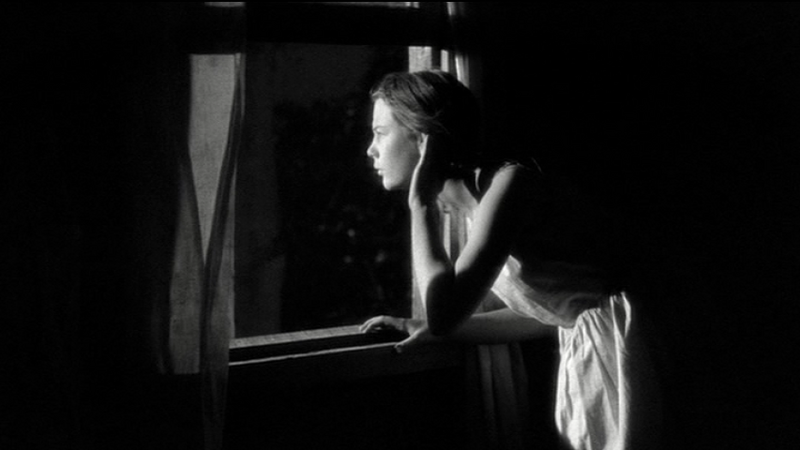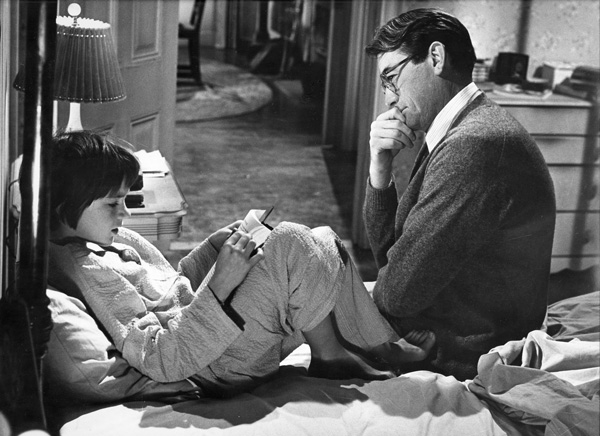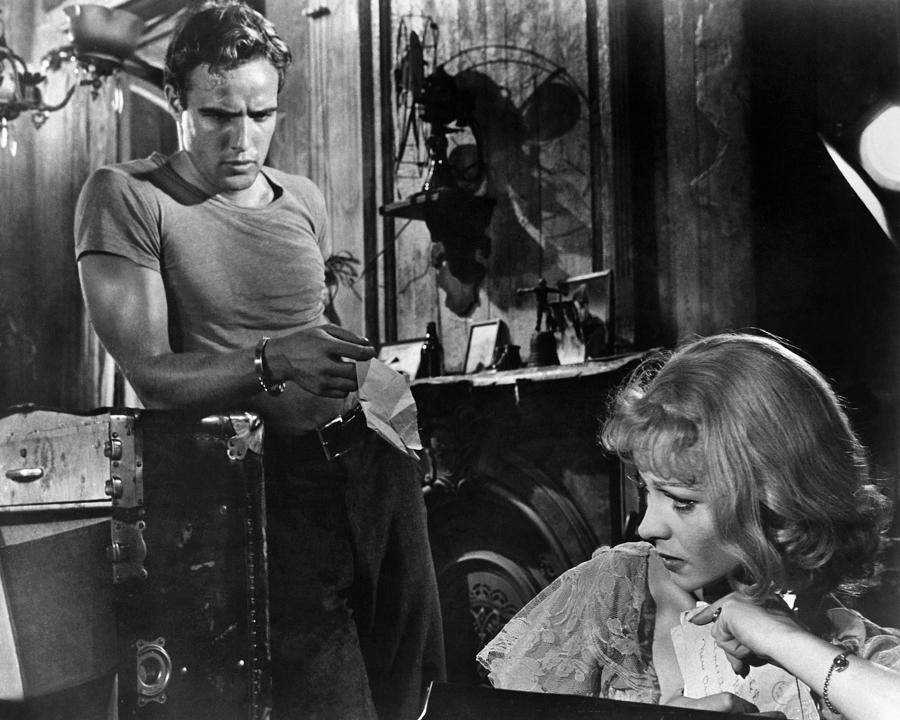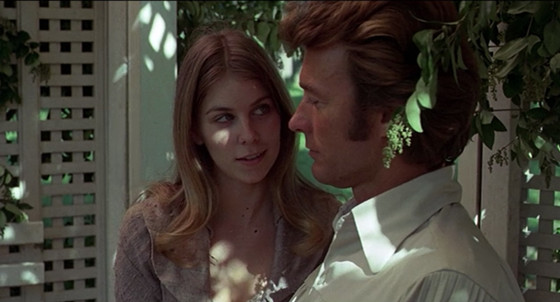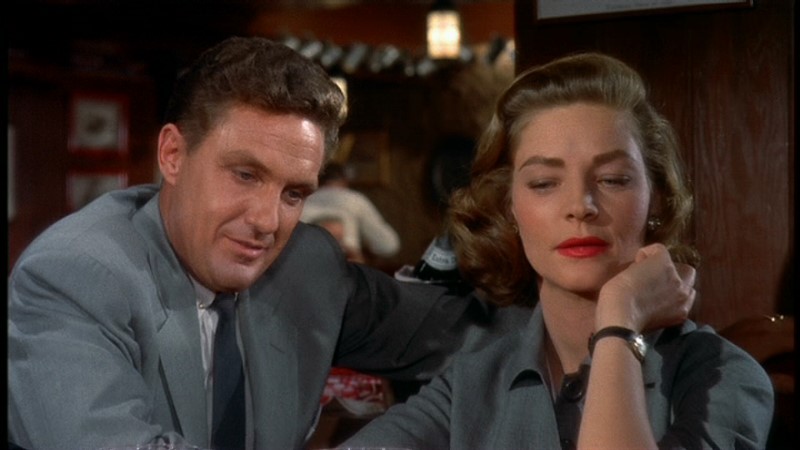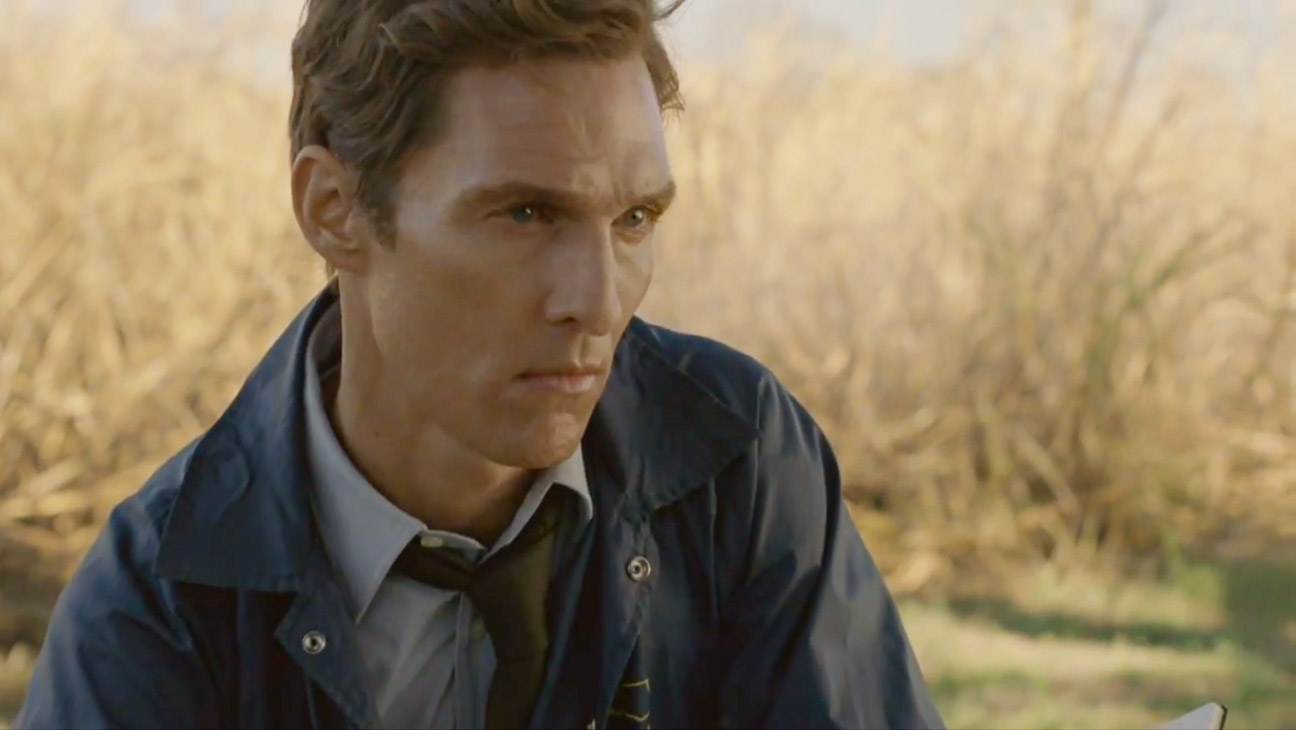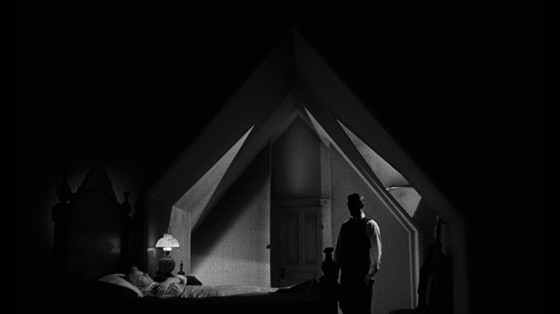7. The Young One (1960)
Luis Bunuel is known for films that criticize the bourgeoisie. The Young One also deals with class but has the added social component of race/racism woven into its narrative. The film opens with Traver, a black jazz musician from the North, being chased by an angry white mob after he is accused of rape by a white woman. He escapes by boat to a nearby island where a game warden named Miller and a young girl named Evelyn (Evvie) and her grandfather live.
After her grandfather dies, Evvie is left to fend off the unwanted sexual advances of Miller. When Miller leaves to go into town the next day, Traver approaches the girl and gets her to give him food and some supplies. They start to form a bond and it’s clear from the way he looks and treats Evvie that he’s a decent and gentle man.
What is notable about the film is how it offers a more positive and multi-faceted representation of a black man in a Hollywood film. In 1960, laws concerning voting rights and the illegality of segregation were being passed and enacted in the South, so Bunuel’s film was dealing with topical and controversial subject matter going on in the country.
An example of this occurs midway in the film when Miller, after hiring Travers to do some work for him, allows him to eat inside with him and Evvie, but not at the same table. The young girl doesn’t understand Miller’s racist attitude toward Traver, leading Traver to say to him: “You ain’t raised that southern girl right.”
The film then becomes a critique of Jim Crow laws and racist attitudes found in the north and south. Another example of the psychology of white superiority is illustrated by the unrepentant character of Jackson: “A lot of soft hearted people’s trying to make out a nigger’s a man. I just don’t believe it. God left something out of you, a soul or something. Trying to prove he’s a man what gets a nigger into trouble. Was you a man I’d be mad at you, but you ain’t, really. I’m sorry for you. And that’s the truth.”
Other minor scenes in the film add to its Southern Gothic flavor, including Traver saying, “I’m so hungry I could eat a dead skunk,” or Evvie nonchalantly stepping on a tarantula and squashing it, and a scene showing a real killing of a chicken by a raccoon that then begins to devour it. This is a fascinating, little known film that deserves to be seen by more people.
6. To Kill a Mockingbird (1962)
Published in 1960, both novel and film were extraordinarily successful when released. The well known characters include siblings Scout and Jem, father Atticus, and their maid Calpurnia.
The film explores in noirish black and white the innocence of children as they explore their private world through role-playing, games, mini-adventures and secrets. One of their obsessions is with neighbor “Boo” Radley, who they attempt to communicate with but with little success. Boo has been cloistered in his home by his father and then his older brother after an early childhood incident convinced his father that he must be kept out of the public eye.
The central conflict involves a black man who is accused of raping a poor white woman, a common racial stereotype based on fear of the intermingling and miscegenation between blacks and whites. For many southerners, this story altered the way whites began to think about race from an African-American point of view.
Jem and Scout are the literary heirs of Huckleberry Finn and their gradual understanding of racial injustice is a vehicle for those who are steeped in a system based on racial supremacy and exclusivity. Boo is the specter that haunts the film and emerges from the darkness as its quiet hero.
5. A Streetcar Named Desire (1951)
Tennessee Williams is featured a few times in this list because he was the preeminent force of the American stage and many of his works were adapted to the screen, several of which have characteristics found in the Southern Gothic tradition. Streetcar is his best-known stage and screen production, and all but Jessica Tandy made the transition from the play to the Elia Kazan film: she was replaced by Vivien Leigh.
New Orleans is the setting for the violent physical and emotional clashes between Stanley Kowalski, his wife Stella, and Stella’s sister Blanche DuBois. What makes the movie truly Southern Gothic are the scenes with Stella’s sister, Blanche, and her reminiscences and delusions about her past.
Blanche pretends to be a southern belle, not unlike Vivien Leigh’s most famous film role—that of Scarlet O’Hara in Gone With the Wind. Instead of the fictional plantation of Tara, Belle Reve is a symbol of the antebellum South, which stands at odds with the modernized New Orleans of jazz and streetcars.
Blanche’s past gradually comes to light, even as she tries desperately to avoid it in both a literal and figurative sense. Always wishing to avoid the harsh glare of direct light, she prefers to cling to the shadows. Stanley’s directness and insensitivity, as well as Mitch’s,
Stanley’s friend and Blanche’s would-be suitor, force Blanche to deal with the ugly truths she desperately wants to ignore and pretend didn’t happen. Blanche’s upper class pretensions clash with Stanley’s brutish behavior and culminate in typical William’s fashion with a scene of horrific violence that takes place off screen.
Class differences are played out through the worldviews of the old and new south by Blanche and Stanley, respectively. As she says to Mitch: “I don’t want realism. I want magic.” Blanche represents the refusal of the post war South to move beyond its mythical past; the political views and economic conditions, it could be argued, support the notion that the region at an institutional and cultural level still hasn’t fully caught up with the progressive ideas that dominate other parts of the country.
Blanche upsets the harmony between Stanley and Stella with her primness, propriety, sense of entitlement and fragility. The veiled elements of suicide, homosexuality, and sexual voraciousness made the film a heady viewing experience that still provides an intense viewing experience today.
4. The Beguiled (1970)
One of Clint Eastwood’s lesser known films, the haunting opening credits plunge the viewer into sepia-toned photographic images of the Civil War that are eventually paired with a slightly haunting voiceover by Eastwood that resembles a lullaby and alludes to some of the movie’s plot elements. The setting is an old plantation that serves as home and school for girls who learn French, history and etiquette.
As John McBurney, Eastwood plays somewhat against type in that he is self-serving, mendacious and manipulative—taking advantage of the naivete and sexual repression/tension among each of the women that gradually builds as his injury heals. The main characters that vie for his attention include Miss Martha, the owner of Farnsworth Plantation; Miss Edwina, the chaste schoolteacher; Carol, a young sexually precocious student; Hallie, the plantation slave; and Amy, the prepubescent young girl who discovers McBurney in the woods and develops an innocent crush on him.
The film sustains a heightened erotic tension that must eventually find an outlet. McBurney becomes the object of desire onto which the various women project their carnal thoughts and feelings. After toying with Martha, Edwina, and Carol, the soldier finally ends up in bed with Carol one evening after everyone has gone to sleep.
Edwina discovers the two together and screams, alerting the rest of the women. In her outrage, Edwina pushes McBurney down the stairs and he shatters his leg. The film incorporates such cinematic devices as voiceovers of characters’ interior thoughts (in the case of McBurney these are often contradictory to what he’s actually saying), dreams and flashbacks.
3. Written on the Wind (1956)
Directed by Douglas Sirk, this lurid melodrama is set in Texas and is a precursor to soap operas such as Dynasty and Dallas that would become huge hits decades later. The film follows the rich Hadley family whose wealth comes from its successful oil company. Spoiled siblings Kyle and Marylee Hadley are the source of most of the conflict throughout the film.
Rock Hudson plays Mitch Wayne, Kyle’s close friend since boyhood, who is everything Kyle is not—responsible, stable, sober, and not affluent. However, early in the story when Kyle meets Lucy Moore through Mitch, he immediately falls in love with her and proposes to her. When he tells her, “I think we’re past the point of no return,” Sirk is signaling to the audience that not only is their relationship inevitable but that the plot is going to take everyone on a wild and disastrous ride.
Sirk is known for his family and domestic dramas of the 1950s, and while critics didn’t particular care for his work, he was popular with movie audiences. In this film as in his others, he saturates the screen with rich colors of pink, red, blue, and yellow to heighten the emotional states of the characters through a visual palette of artifice.
While Sirk’s films avoid any visual semblance of realism, that doesn’t mean they are empty or meaningless. It is in fact these surface qualities devoid of realism that allowed the director to address social issues such as those of race and class and call into question notions of Hollywood escapism and suspension of disbelief. Written on the Wind also throws in such taboo subject matter of alcoholism, suicide, impotency and nymphomania to create an over-the-top depiction of southern decadence.
2. True Detective (2014)
True Detective became a huge hit with audiences and critics in 2014. All the Southern Gothic elements are on display here: ritual murder, the pervasive influence of religion, systemic abuse of power, poverty, drug and alcohol addiction, prostitution, religious hypocrisy, infidelity, sexual depravity, conspiracy, secrets and lies. However, what really makes it work is the chemistry between the two leads, Matthew McConaughey as Rust Cohle and Woody Harrelson as Marty Hart.
Despite their profound differences, it is their desire to see the child murders solved and the perpetrators captured, not to mention their mutual respect for one another, that makes them a compelling and efficient detective team, even if their personalities sometimes collide. For this reason, coupled with the beautiful cinematography and intelligent script, it is an existential Southern Gothic masterpiece.
True Detective takes its critique of religious fervor and fanaticism further than Night of the Hunter by distilling Nietzschean articulations about religion, faith and belief in God through the philosopher-cop Rust Cohle. One of the best examples of this occurs when he and Marty are at a revival. Rust is explaining the psychological need for why people need for an omniscient omni-powerful presence outside themselves, which involves a “transference of fear and self-loathing to an authoritarian vessel. It’s catharsis. He absorbs their dread with his narrative.” It is the absorption of such fear, dread and self-loathing into himself that the killer finds his own religious brand of cathartic release in the ritual violence he perpetrates and performs that gives his own life meaning.
The series is also about narrative and storytelling. Why it’s important, which narratives we choose to believe and which we choose to discard. The physical and mental exhaustion takes its toll on both men over the years as the unresolved case weighs heavily on them. In this regard, True Detective is also a great addition to the serial killer genre.
1. The Night of the Hunter (1955)
“Beware of false prophets which come to you in sheep’s clothing, but inwardly they are ravening wolves.”
Charles Laughton’s only film, this masterpiece of Southern Gothicism explores the hypocrisy and religious fanaticism of the sadistic ex-con preacher, Harry Powell, played by Robert Mitchum, who terrorizes two young children safeguarding money left to them by their father, Ben Harper, shortly before being sent to prison.
Ben and Harry share a cell together and he tries to find out where Ben has hidden the 10,000 dollars he stole. Harry embodies the worst of religion—hypocrisy, self-righteousness and a loathing of women—all expressed through his denunciation of sex: instead of seeking amorous relationships with women he kills them and steals their money, thus making this one of the earliest depictions of serial killing in American cinema.
Notable for its haunting and poetic imagery that borrows from German expressionism, it perfectly captures and distills all the elements that make the genre so satisfying: a mysterious and enigmatic landscape; unsolved murders; and religious references and iconography. Because the point of view is mostly that of the two siblings, John and Pearl, the scenes of them escaping the preacher and floating down the river are distorted, unrealistic and surreal.
The film also has touches of realism such as the opening sequence when John’s father is arrested and outdoor scenes when John and Pearl are discovered by Rachel Cooper (played by Lillian Gish), the kindly old woman who takes in abandoned children and nurtures them. The realism of these scenes serves to draw attention to the depression era in which the film is set. Gish’s stalwart portrayal of Rachel give the film its moral center and redemptive counterpoint to the preacher’s prevarications and moral bankruptcy.
The film was made for under a million dollars and wasn’t properly marketed and distributed. Because of its subject matter, it was poorly received by film critics and audiences, while some family and religious organizations found it offensive and objectionable. Over the years, Night of the Hunter began to be discovered by new and younger audiences until in 1992 its well-deserved status as an important film was recognized by the National Film Registry.
Laughton, up to this point in his career, was known primarily as a great actor (The Hunchback of Notre Dame, Mutiny on the Bounty); however, this film proves he was a talented director as well. Unfortunately, his poor health and the film’s lackluster reception ensured that he’d never direct again.
Author Bio: Daxton Norton is a professor of composition, film and literature and holds a Ph.D. in Comparative Literature from The University of Oregon, with an emphasis in film studies. He enjoys teaching students how to watch and think critically about movies.
